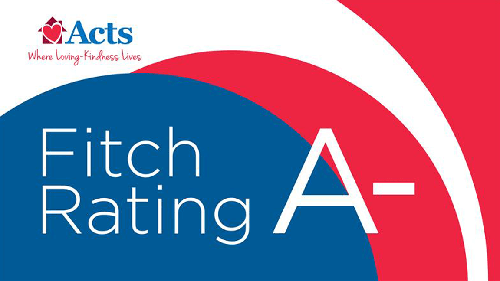Understanding Retirement Community Contracts – What You Should Look for and Planning for Future Needs
If you’re considering moving to a retirement community because of the many benefits they offer, you’re not alone. Modern retirement communities have revitalized after 50s living, and an increasingly popular choice are what’s called continuing care retirement communities, or CCRCs. What makes CCRCs stand out is their unique ability to welcome you as a resident when you are vibrant and independent and ready to take advantage of their terrific amenities like swimming pools and fitness centers and connections to golf courses, but to adapt to your health needs as they change. Should you ever need a higher level of care, you can receive it on the same CCRC campus where you otherwise swim laps in the pool.
Because of this nature of health evolution, moving into a CCRC requires signing a retirement contract. Because there are a wide range of contract types, it’s important to understand what you’re getting when you sign on the dotted line. We want you to know what to look for and to ensure you’re planning ahead for any future needs, which is why we’ve put together this guide to understanding retirement contracts. Let’s get started!

Different Types of Retirement Community Contracts
When it comes to the different types of retirement contracts offered by CCRCs, there are five main varieties. Each of them provides different services and will have different prices associated with them, so it’s necessary to understand your costs versus what you’re getting. Here’s a closer look at these contract varieties.
The Life Care Contract
Sometimes called a “Type A” contract, a life care contract with a CCRC has the resident paying a larger fee up-front in exchange for not having to worry about paying market rates for health services later in their stay. Residents with life care contracts prepay a percentage of any health-related services they may need at some later date, offering the exceptional benefit of being able to predict healthcare expenses throughout their time at the CCRC.
Put another way, an independent living resident who needs to utilize assisted living services may need to pay thousands more a month for that healthcare if he or she is not under a Type A contract. But an independent resident with a Type A contract will not face any increase in fees if moved from their independent living residence into assisted living.
This can obviously end up saving a bundle, unless of course you never need a higher level of care. LongTermCare.gov estimates that someone turning 65 today has a 70% chance of needing some type of long-term care service and support. Those who choose Type A retirement community contracts are opting not to gamble with their savings, and tend to enjoy their golden years never having to worry about whether they’ll be able to pay for health services or how much savings will be left to pass to their families.
It’s important to note when looking into a CCRC which services, such as skilled nursing care, are included.
Modified Contracts
Modified CCRC residency contracts, also known as Type B contracts, differ from Type A contracts by having part of your entry fee or also your monthly fee go toward future healthcare needs for a limited time. An example of how this works would be having a resident pay in full for care services in exchange for providing a number of “free” care days every year at the community’s healthcare center that are actually in essence prepaid.
The benefits to such a contract are that monthly and entry fees tend to be smaller than those under a Type A contract. This is good for residents in the shorter term, and can also be beneficial if residents don’t anticipate having much in the way of healthcare needs during their stay. However, as these benefits aren’t permanent, you could face out-of-pocket healthcare costs if your needs suddenly change without warning.
Fee-For-Service Contracts
Type C contracts, often also known as fee-for-service contracts, offer even lower entry and monthly fees than Type A and B contracts. The downside to this retirement community contract option, which may be obvious by this point, is that if a resident becomes in need of a higher level of care like assisted living, their monthly fee will increase to cover that level of care – in many cases at exponential rates.
These contracts offer some of the benefits and drawbacks of both Type A and Type B contracts. Unlike a Type A contract, residents aren’t prepaying on the front end for care they might not ever need. Likewise, unlike a Type B contract, residents who end up needing advanced care don’t have to pay completely out of pocket but instead simply increase their monthly fees for the services they need.
In essence, then, this is the core gamble a resident must decide: will you fall into the 70% who need a higher level of healthcare, and if so, do you want to pay a lower rate for it now, or pay the escalated rates if that time comes?

Rental Contracts
Rental contracts perhaps offer the most flexibility and versatility to CCRC residents in the short term. These contracts often don’t require residents to pay a large entry fee at all, but instead a much smaller “community” fee, often just a few thousand dollars, upon entry. These contracts are quite often month-to-month, which means that residents can move out at practically any time they would like; in exchange, however, monthly service fees are usually higher than what someone would encounter if they paid a full entry fee.
Other differences with a rental contract include possibly not providing residents with priority access to the CCRC’s healthcare services. However, residents can still access these services in the same way that a Type C contract would provide them. This makes rental contracts ideal for short stays but are likely to cost residents much more in the long run than either a Type A, B, or C contract.
Equity or Co-Op Contracts
While many CCRCs ask residents to rent their home or apartment, residents with an equity or co-op contract own their home instead. Monthly service or membership fees still apply in order to access amenities and home maintenance. This means that the heirs of a resident can inherit the property just like they would with any other home. Meanwhile, residents can purchase healthcare in the same way that someone under a Type C contract would whenever necessary.
This type of retirement community contract is very much the opposite of a rental contract, as it’s meant for residents who plan to be around for longer periods of time. This contract also has benefits in that a resident or their heirs can access the equity in the home if it ever sells. It also has the potential to reduce monthly fees for the resident, though residents also need to take into account the cost of any healthcare services they may need.
Choosing the Best Retirement Contract for You
It can certainly feel overwhelming and intimidating if you’re trying to compare different CCRC retirement community contracts on your own, especially if you don’t have any experience in understanding the complex language used in contracts. Always rely on expert help to ensure you’re making the right decision – consider your possible healthcare needs and your tolerance for better, ask plenty of questions, and do all the research you need to do before signing on that dotted line.
Acts Retirement-Life Communities consist of 28 campuses throughout the northeastern United States, all operated via the same focus on loving-kindness, with a resort-type lifestyle and guaranteed health services when needed. To learn more, explore any of our campuses.





